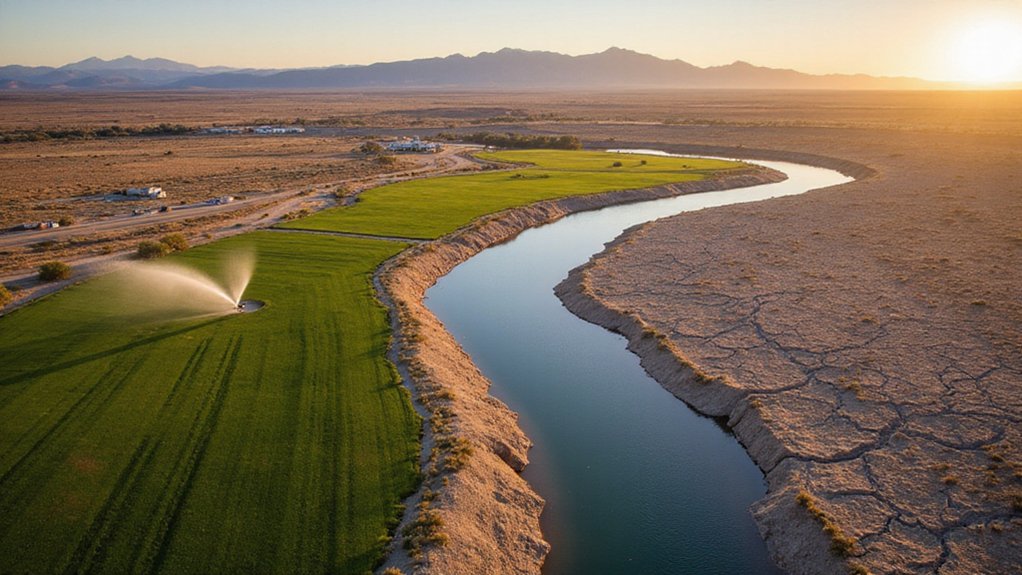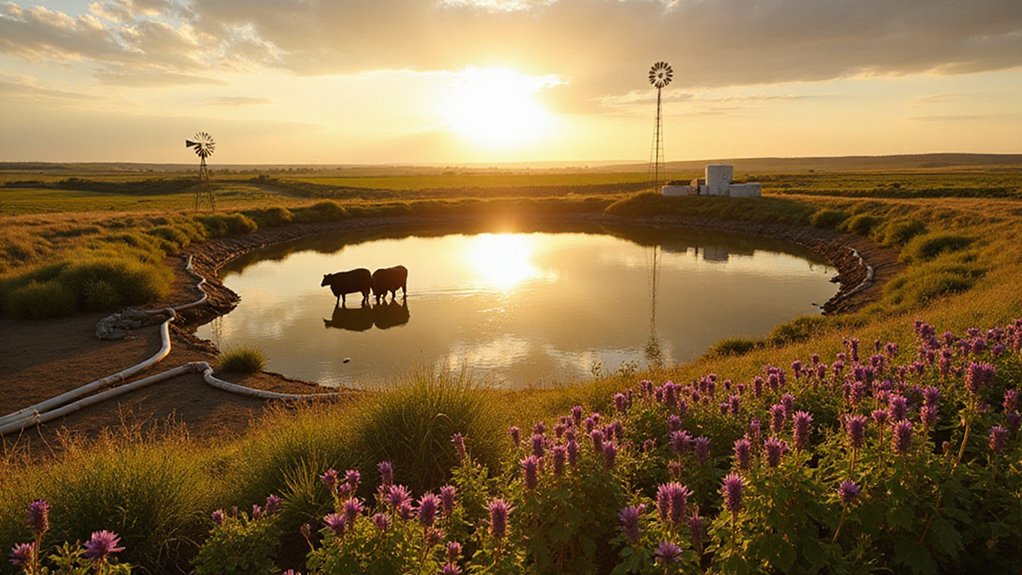While scientists keep warning about climate change making droughts worse, the atmosphere apparently didn’t get the memo to play nice. Instead, it’s acting like a giant sponge, sucking moisture from everywhere it can reach. Rising temperatures are making the air thirstier than ever, and that’s bad news for anyone who likes water.
The math is pretty simple. Hotter air holds more moisture. When temperatures climb, evapotranspiration kicks into overdrive, pulling water from soils and plants like some atmospheric vacuum cleaner. This dries out the land faster than you can say “water crisis.”
Hotter air holds more moisture, turning the atmosphere into an insatiable vacuum cleaner for Earth’s water.
And here’s the kicker: those thirsty plants that normally absorb CO2? They’re too stressed to do their job properly. So more carbon dioxide hangs around, making things even hotter. It’s a nasty cycle that feeds itself. In fact, droughts actually increase atmospheric carbon dioxide by reducing land productivity and vegetation, creating a feedback loop that accelerates climate change.
The land and atmosphere are locked in a toxic relationship. Dry soils can’t evaporate much water, which means less moisture for potential rainfall. Without that cooling evaporation, more solar radiation just heats the air directly. The 2018 European drought demonstrated this perfectly, with temperatures becoming hypersensitive to declining soil water once a critical moisture threshold was crossed.
Suddenly, you’re not just dealing with drought – you’ve got a heatwave party nobody asked for. These compound disasters are becoming the new normal, and climate models are still playing catch-up on predicting them accurately.
Ocean temperatures aren’t helping either. La Niña shows up and acts like the unwelcome guest who ruins precipitation patterns, especially in the southwestern United States. When the Pacific gets moody with its temperature swings, storm tracks shift away from areas that desperately need rain.
Throw in some warm Atlantic waters and cool Pacific temperatures, and you’ve got the perfect recipe for atmospheric circulation patterns that spell D-R-O-U-G-H-T.
Those persistent high-pressure systems blocking storms? They’re like bouncers at a club, turning away any rain clouds that dare approach. The Dust Bowl and 1950s drought weren’t flukes – they were previews of coming attractions. Since the 1970s, global temperatures have risen about 1.7°F, intensifying drought conditions worldwide.
Models confirm what farmers already know: when soils start dry, they tend to stay that way, amplifying drought conditions through feedback loops that would make any engineer wince. The atmosphere’s growing thirst isn’t just changing the weather. It’s rewriting the rules.
References
- https://www.c2es.org/content/drought-and-climate-change/
- https://pmc.ncbi.nlm.nih.gov/articles/PMC6378599/
- https://agupubs.onlinelibrary.wiley.com/doi/full/10.1029/2020AV000283
- https://www.science.org/doi/10.1126/sciadv.aay7268
- https://journals.ametsoc.org/view/journals/clim/27/12/jcli-d-13-00329.1.xml








